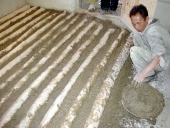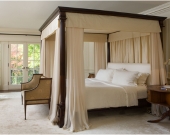Phil wrote: "To avoid the problem of leaks, how about filling with sand?"
Hi Phil;
Though standing bottles upright, with the sealed opening on top, should solve the leak problem, there are generally more problems with sand than with water, due to effectiveness.
Sand has less than a third the thermal mass of water, per volume.
Sand also weighs 60% more by volume, therefore about 5 times (or more) as much weight per thermal mass, so it generally needs to be located low.
Dry sand has an Rvalue of about 0.58 per inch, while water thermally circulates, so has virtually 0 Rvalue, though it tends to stratify, which for small containers with large surface areas, such as bottles, is generally a non-factor. ..and in big containers can be used as an advantage.
Concerns with water might be 1) freezing, 2) leakage, and 3) corrosion. All three of these might be overcome by using recycled plastic containers, which can literally freeze solid without bursting. . However, that introduces an issue of evaporation through the surfaces of the containers, after several years. That could be reduced by a low permeability, vapor barrier paint, and/or a partial covering (around the middle) of aluminum tap, which while it would be difficult to fully cover a bottle, has a permeability that is virtually zero, and also reduces the radiant heat losses, which might be an advantage in an air convective heat storage.
As I have stated before, my recommended location of a thermal mass using small containers would be above the heat source, where air can naturally/passively convect up to it. This configuration also provides very good control of heat coming out of the heat storage to the space that is to be heated. An active fan (electric, even supplied with green electricity) can be used with a thermostat for passive solar heating with virtually full control, while avoiding the labor and/or cost and thermal uncontrollability of a heavy masonry thermal mass. It also opens up the choices for the floor, including wood frame structures. and second story solar gain.
- Retired designer of passive solar and highly energy efficient homes -






